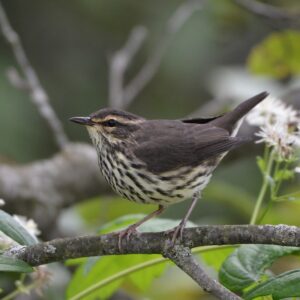Bringing the World’s Forests Into Focus: 2011 International Year of Forests
In an effort to raise awareness on the sustainable development and management of forests, the United Nations General Assembly has declared 2011 the International Year of Forests.
Why are forests important enough to warrant a global campaign?
Quite simply, the world’s forests are essential to life on this planet.
For starters, the majority of the earth’s biodiversity lives in forests. Since Canada is home to 10% of the world’s forests – forests cover half the Canadian landscape – we have a key role to play in the global effort to conserve and sustainably manage forests.
As the “lungs of the earth”, forests absorb carbon dioxide, reducing the effects of climate change. Among other things, forests provide wildlife with a place to live, reduce sedimentation and regulate flooding, and help people reduce their energy consumption by shading buildings and screening winds.
To celebrate International Year of Forests, Nature Canada and other conservation groups will be promoting dialogue on forests and engaging people in forest activities.
We’ll be following all things related to International Year of Forests on Twitter and Facebook, and providing interesting forest facts and forest ecosystem profiles on our Nature Canada blog throughout the year.
We’re already involved in conserving and restoring forest ecosystems in Canada, particularly in the Boreal Forest. At 1.3 billion acres, the Canadian Boreal Forest is one of the largest intact forest and wetland ecosystems remaining on earth.
We support the Boreal Forest Conservation Framework, an alliance of conservation groups, First Nations, and leading Canadian companies whose aim is to protect 50% of the region and support sustainable practices in local communities.
To that end, Nature Canada worked with First Nations and governments at all three levels to establish the Mealy Mountains National Park Reserve, which was announced in February 2010. This Park Reserve, along with an adjacent provincial park, caps a 15-year effort and will protect roughly 13,000 km2 of boreal forest habitat. The permanent protection of such a large area of boreal forest ensures at-risk species like the woodland caribou and the harlequin duck have the habitat they need to survive.
We’re continuing to participate in discussions about the final park boundaries to ensure that wildlife is protected.
As the boreal forest extends as far north as the Northwest Territories, so have our conservation efforts. We are working to protect the Edéhzhíe National Wildlife Area by advocating for the reinstatement of interim protection for Edéhzhíe’s subsurface lands.
We’re also working with James Bay Cree to protect migratory birds of the Ontario and Quebec boreal region, by identifying shared conservation priorities around birds and Important Bird Areas. It’s a natural relationship, since we share a common interest with many of the communities in protecting these areas – the habitat and ecosystem conservation that we are seeking acts to conserve an important part of their culture. Protecting and monitoring Important Bird Areas is the cornerstone of bird conservation in forest ecosystems like those in the James Bay region.
We have also worked to protect critical forest habitat for endangered species, such as the Woodland caribou. Since leading a coalition of groups who worked to establish Canada’s Species at Risk Act, we’ve been hard at work ensuring that wildlife protection laws are fully in effect.
Beyond our national boundaries, we’ve extended our reach to include a project in Haiti that provides an incentive – free education for elementary-school-aged children – for communities in the Macaya National Park to adopt sustainable forest management practices. In this way, the school offered hope for 300 girls and boys while providing incentives to relieve pressure on important habitat for Canadian migratory birds like the Bicknell’s Thrush.
For its part, the UN is providing a series of communications initiatives and materials, which include a website, logo, film and art competitions, exhibits and promotional multimedia projects. Its goal, among others, is to “Promote observance of the Year not as an isolated event but as part of a continuing process of advocacy and partnership to foster greater awareness and action towards sustainable forest management at all levels.”
Forests are important around the world. Here are a few reasons why:
- 30% of forests are used for production of wood and non-wood
products. - Forests cover 31% of total land area.
- The livelihoods of over 1.6 billion people depend on forests.
- Primary forests account for 36% of forest area.
- Trade in forest products was estimated at $327 billion in 2004.
- Forests are home to 300 million people around the world.
- Forests are home to 80% of our terrestrial biodiversity.




